As a business owner, it’s natural to want to maximize your earnings and build a profitable agency. However, it’s not uncommon for agency owners to struggle with achieving this goal, especially if you’re in the early stages of your startup. As revenue grows and the team expands, many owners still find it challenging to increase their bottom line at the same rate – that’s where profitability drivers come in.
Here’s the thing; being highly profitable isn’t just good for owners. It also benefits your employees and customers. When your agency is profitable, you’re not limited by financial constraints, and you can act in alignment with your values. This enables you to set clear expectations with your team and clients. It can even extend to guiding those who may not be a good fit with your agency towards a better-suited option.
If you’re wondering if you should commit to reading the rest of this post, ask yourself the following two questions…
- Are you an agency owner who has made less than a 20% EBITDA after paying yourself a market-rate salary?
- Are you unsure how to measure and improve your profitability?
Answered “yes” both? If so, please consider this an opportunity to learn the essential guidance strategies in order to take control of your finances – while building a more profitable business that benefits all involved.
Let’s dive in 👇
Definition of Profitability Drivers
What exactly drives profit?
Well, lots of tactical factors will influence your company’s profitability. Among them – a full pipeline; efficient project management; productive team members; accurate cost tracking: and an effective pricing strategy. That’s just for starters.
Where we’d like to focus today, however, is the more strategic fundamentals permitting you to identify the tactics that are key to moving your profitability in the right direction.
We’ll focus on the basis for agency profitability – that being Delivery Margin – alongside the three strategic drivers that influence it.
Typical Pitfalls of Profitability
Naturally, as an agency owner, you’re likely to be hyper-aware of your profitability… after all, you wouldn’t be here without it.
Through speaking with hundreds (and hundreds) of agencies a year, we’ve learned that agency owners trying to solve profitability issues are usually getting it wrong. More often than not, they’re attempting to do so by focusing on decreasing Overhead Spending.
True – you can improve your profitability by lowering overhead. However, the major problem doesn’t usually stem from overspending. It generally boils down to these agencies having a poor Delivery Margin.
There are two reasons why you’re probably not focused on Delivery Margin right now:
- Firstly, you might not be fully aware of its impact
- Secondly, perhaps you don’t have adequate visibility into it (via your P&L).
So, what is Delivery Margin?
Delivery Margin: Your Main Profitability Driver
Delivery Margin is also known as the Delivery Cost to Agency Gross Income (AGI) that your business earns in a given time period/across a given section of work. This metric really trumps questions such as “how to price my services”, or “how much to pay your team members”. At the end of the day, those questions only matter to the extent that they result in a strong Delivery Margin.
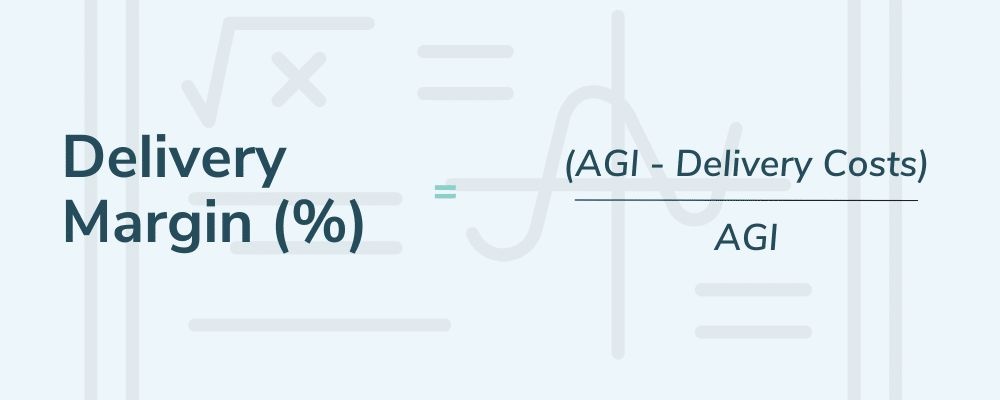
At Parakeeto, we have had the privilege of seeing innumerable agencies’ financials, so we’ve got a solid insight into where you should be positioned to be considered “healthy”. At the agency-wide level (not just on a particular project, but for the agency as a whole) having a Delivery Margin of 50%, or higher, would be considered “in a good place”.
Similarly, at the project level, a Delivery Margin of 10-20% above the agency-wide target would be considered “healthy”. The project-level target is typically 10-20% higher, because it takes into account gaps in utilization, time off, holidays, turnover/training, etc.
It also includes Shared Delivery Expenses, AKA expenses related to delivery that can’t be attributed to one particular project – rather, delivery as a whole (which typically accounts for about 4-8% of AGI). If you were a design firm, that might be things like design software, stock footage libraries, shared hosting, etc.
Now that you understand the importance of improving your Delivery Margin, it’s time to explore the three strategic levers for enhancing your Delivery Margin.
Understanding what these levers are, and how to measure them in your agency, will make identifying the right tactics to employ much easier for you and your team.
Strategic Lever 1: Average Cost Per Hour (ACPH)
Is it possible to do the same work that you’re doing for clients – at the same prices you’ve been charging – while spending less money?
It’s a simple idea, but not necessarily an easy one to implement in practice. The starting point is understanding your Average Cost Per Hour (ACPH) and how it differs for each of your team members, and for the different types of work you do in your agency.
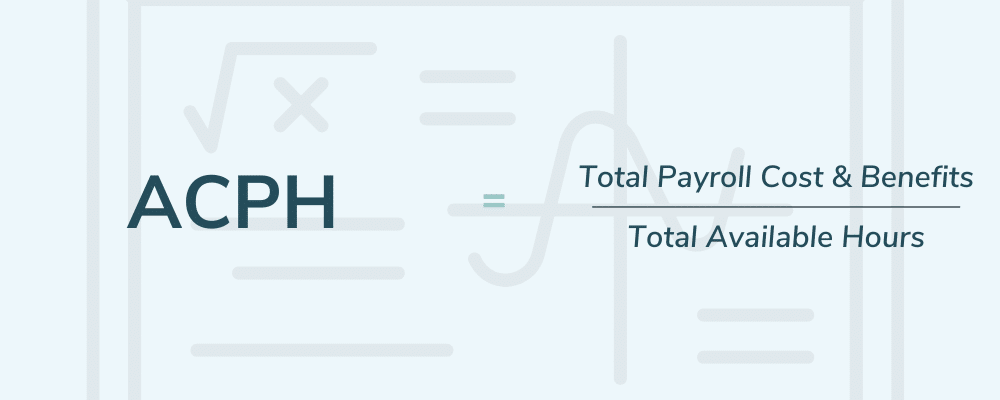
Your ACPH figure is calculated by taking your Total Payroll Cost & Benefits (in a given time period) and dividing it by the Total Hours Available (in a given time period).
Where Total Payroll Cost & Benefits is a team member’s salary – plus any benefits, taxes etc. added up – Total Available Hours is the total capacity being purchased from that set of employees in a given period of time. For most employees, this is 40 hours per week, or 2,080 hours per year. Here is a link to a calculator we devised to help you with this.
For example:

In order to decrease your ACPH, the objective is to find ways to have less expensive people doing more of the work in order to complete a given deliverable. Tactically, this often means enhancing the efficiency of processes and establishing clear Standard Operating Procedures (SOPs).
You can use those SOPs to decrease the amount of judgment required to complete a task. This enables less skilled, or less costly, individuals to complete work that was previously reserved for more experienced talent.
Additionally outsourcing to offshore, or nearby, locations can also contribute to cost savings. While the concept is straightforward, the implementation requires effort and diligence – the goal is to identify and engage less expensive resources to accomplish the same tasks.
If you employ freelancers and contractors, you’ll see a reduction in ACPH result in improved profitability almost instantly. If your team is mostly made up of employees, you’ll start to see the impact of this as the composition of your team changes to reflect the lower need for more senior staff. With more of the work being done by junior staff, the overall payroll for the team should be lower as that team scales and matures.
Benchmarks
You might be wondering if you have an average ACPH, or how it compares to your competitors. In short, it doesn’t really matter what it’s costing them. We can’t say “your ACPH should be $80.66, or $35”, because there are too many factors influencing this number. It boils down to the kind of work you sell to clients, the geographical location from which your team operates, etc.
What’s most important is the relationship between your Average Cost Per Hour and your Average Billable Rate (which can be used as a proxy to estimate delivery margin). Generally speaking, you want your ACPH to be approximately 1/3 your Average Billable Rate (ABR), or represent a 60%+ margin relative to your ABR.
More on ABR below 👇
Strategic Lever 2: Average Billable Rate (ABR)
Changing the amount of money you bring into your agency per hour worked (in other words, your Average Billable Rate) will have a significant impact on Delivery Margin.
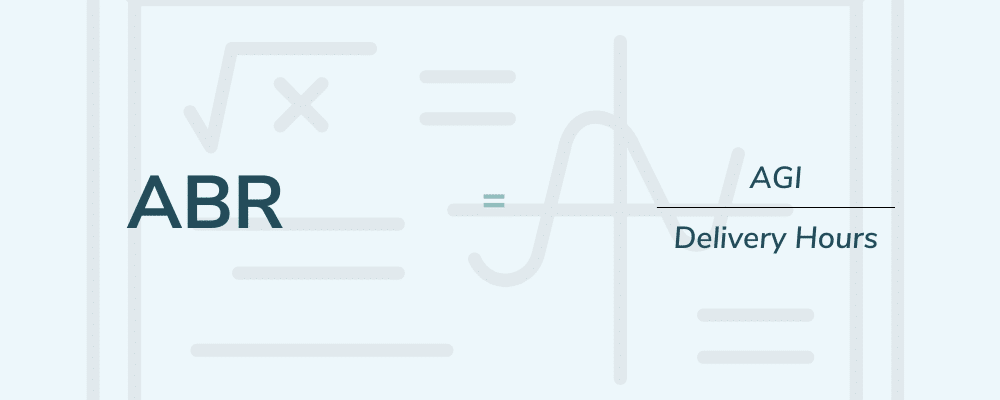
Your ABR is calculated by taking your Agency Gross Income (AGI) and dividing it by the number of Delivery Hours required to earn that AGI.
- AGI is your Total Revenue minus your Pass-Through Expenses.
- Total Revenue is just what you brought in for the project (or projects).
- Pass-Through Expenses are expenses incurred by bringing in external vendors to deliver your services to end clients. This revenue is not owned by your agency. Instead, it flows through to an external partner or vendor. Examples are white-label partners, advertising purchases, printing expenses, and so on.
- Delivery Hours are any time spent doing client work within your specific time period/set of projects that you’re calculating for.
For example:

If you’ve done your first calculation and are feeling just a little ashamed of its outcome, it’s OK. We’ve all been there. Let’s discuss increasing this number…
There are two main ways you can tackle increasing your ABR:
- Charge more money for the same deliverable (without increasing the scope).
- Spend less time completing the same deliverable (without decreasing the price).
Raising prices, or optimizing your pricing model, is often the first and quickest way to improve your Average Billable Rate. However, at some point, you may find yourself running up against legitimate pricing pressures, which limits your ability to continually increase the price…
That’s why it’s equally important to evaluate how to decrease the amount of time required to complete deliverables for clients. It’s just as effective at improving your average billable rate as pricing increases. This can be done through better processes, templatization, investments in technology, or outsourced services, etc.
Benchmarks
Similar to our ACPH benchmark; what other firms are charging, or what their ABR is, is largely irrelevant. What does matter is the relationship between your Average Billable Rate an your Average Cost Per Hour.
Typically, you want your ABR to be about 3x your ACPH, or represent a 60%+ margin relative to your Average Cost Per Hour. The ideal percentage would be 70%+.
Strategic Lever 3: Increasing your Utilization Rate
Your third and final lever for influencing your Delivery Margin numbers is your utilization rate. This metric is one that has been, well, very misunderstood.
Perhaps you and your team have had a bad experience with this metric in the past given there can be confusion around its precise calculation. What exactly is someone’s capacity?
It’s important to know that Utilization rates, when used in the wrong way, can actually have a detrimental impact on your profitability and your team’s timesheet compliance. So it’s super important to understand this metric, the purpose behind it, who should be looking at it, and – more importantly – who shouldn’t. More on that here.
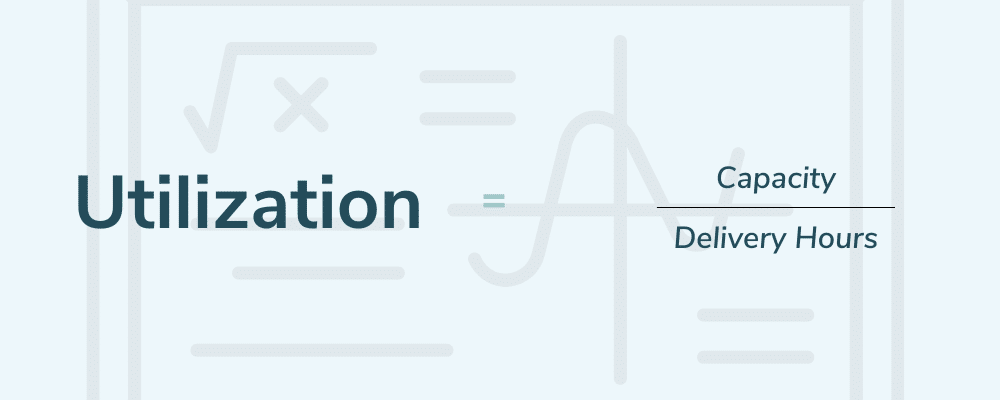
Utilization is a measure of the average amount of purchased capacity that is deployed against revenue-earning activities – in a given period of time. Simply put, it helps you understand how busy your team was with client work across a given period of time.
In reality, Utilization isn’t a number you should shy away from. It is a metric that the leadership team at an agency is accountable for, that, if used correctly, can be an extremely valuable lever.
Utilization is a metric that the leadership team at an agency is accountable for. After all, it’s their job to ensure there is enough business coming in to keep the team busy. Leadership is also responsible for clarity across the team in terms of what they should be working on/prioritizing – and that the team is adjusted to meet demand when work isn’t coming in as expected.
To calculate this number take your Capacity and divide it by your Delivery Hours.
- Capacity is the total amount of hours purchased from your team being measured in that time period. For most full-time employees, this number will be 40 hours per week, or 2,080 hours per year. You want to avoid adjusting this number for things like time off and holidays.
- Your Delivery Hours are any hours spent doing client work. (Not to be confused with hours billed to the client; this metric doesn’t care if the client was billed or not, only that the hours were required to get the work done)
For example:

It should go without saying; there are only two ways to increase utilization:
- Decreasing capacity to more closely match the number of delivery hours planned.
- Selling more work to more closely match the amount of capacity.
Notice that I said, selling more work, as opposed to simply “increasing delivery hours”. More delivery hours are only beneficial to the extent that they earn more revenue.
A common mistake made with Utilization stems from exposing a utilization target to the team and holding them accountable to it. What this typically leads to is the team spending more time completing the same deliverables, thereby earning the same revenue.
The result? A proportionate decrease in average billable rate. This means your team is overworked, your clients are over-serviced, and your profitability is the same as it was before…
Benchmarks
Utilization will vary depending on the culture of your agency. That said, we typically see agencies landing in the 50-60% net annual utilization range – if they want to charge average rates and still have a decent profit margin.
This number would be agency-wide, and looks different if you’re talking about just your pure producer’s utilization. See below:

Many agencies will deliberately set a higher utilization target, allowing them to maintain high profitability with lower rates. This strategy would be a “high volume” type of culture that is predicated on doing a lot of work at lower rates, keeping the team very busy at all times.
Others will opt for a lower utilization target. For example, this could involve employing a 4-day workweek and making up for that decreased utilization with higher rates. These firms employ a “high quality” type of culture where the focus is on doing a lower volume of work, but charging a premium for it. Part of that premium is passed on to the team in the form of a more relaxed workload.
Example – Moving Delivery Margin
Let’s walk through an example of how all three strategic levers can have an impact on your Delivery Margin.
Consider a scenario where you’re a Creative Agency, bringing in $1M in AGI per year. Your Delivery Costs in this time period amount to $600,000, leaving you with a 40% Delivery Margin.
Delivery Margin = (AGI – Delivery Costs) / AGI
($1,000,000 – $600,000) / $1,000,000 = 40%
Let’s first assume you’d like to try Strategic Lever 1 – lowering your ACPH. Creating better processes and documentation has enabled you to output the same quality and amount of work for your clients, for less cost. Your Delivery Costs are now only $500,000, leaving you with a Delivery Margin of 50%.
($1,000,000 – $500,000) / $1,000,000 = 50%
Now, let’s assume you’re going to focus on Strategic Lever 2 – increasing your ABR. You were able to increase your price by 2%, while leaning on better processes to output your work in less time. Your ABR increased from $150/hr to $160/hr, growing your AGI to $1,150,000 on the year. Your Delivery Margin now sits at 56%.
($1,150,000 – $500,000) / $1,150,000 = 56%
Lastly, let’s assume you could also focus on Strategic Lever 3 – increasing your Utilization Rate. You were able to sell enough work to keep your team more utilized this year, increasing the agency-wide Utilization Rate by 5%. By selling more work, your AGI increased by $150,000 on the year. Your Delivery Margin now sits at 61%.
($1,300,000 – $500,000) / $1,300,000 = 61%
Did you know?
Parakeeto offers a totally free toolkit where you can automatically generate your Delivery Margin and other profitability metrics using our Optimization Simulator. Here is what that looks like:
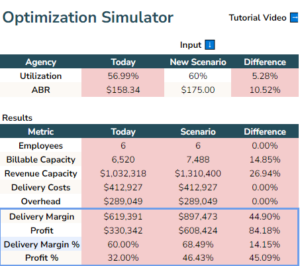
How to Prioritize Profitability Drivers
Prioritizing Delivery Margin – your main profitability driver – will be key to taking your agency to the next level.
Understanding which of the strategic levers to pull first will come down to calculating each of your key metrics. This will help you to understand where you sit in relation to industry benchmarks while running some scenarios on how improvements in each of these metrics will impact your profitability.
If you’re unsure how to do this analysis and would prefer to have an expert firm do it for you, we invite you to apply for a consultation to see if your agency is a good fit for our Agency Profitability Audit. The audit will benchmark you against all of these KPIs to help you identify exactly which lever to prioritize – and how much profit you stand to gain from it.
In Summary
Achieving high profitability is crucial for the growth and success of your business. A profitable agency provides job stability, career advancement opportunities, and appropriate compensation to employees, while offering high-quality services to clients.
Delivery Margin is the main profitability driver of an agency. It can be enhanced by tactics such as lowering your ACPH, increasing utilization rates, and improving your Average Billable Rates. To be considered healthy, an agency should have a Delivery Margin of 50% or higher at the agency-wide level and 60% at the project level.
The implementation of these strategies requires effort and diligence, but it is essential for building a profitable business that benefits everyone involved.

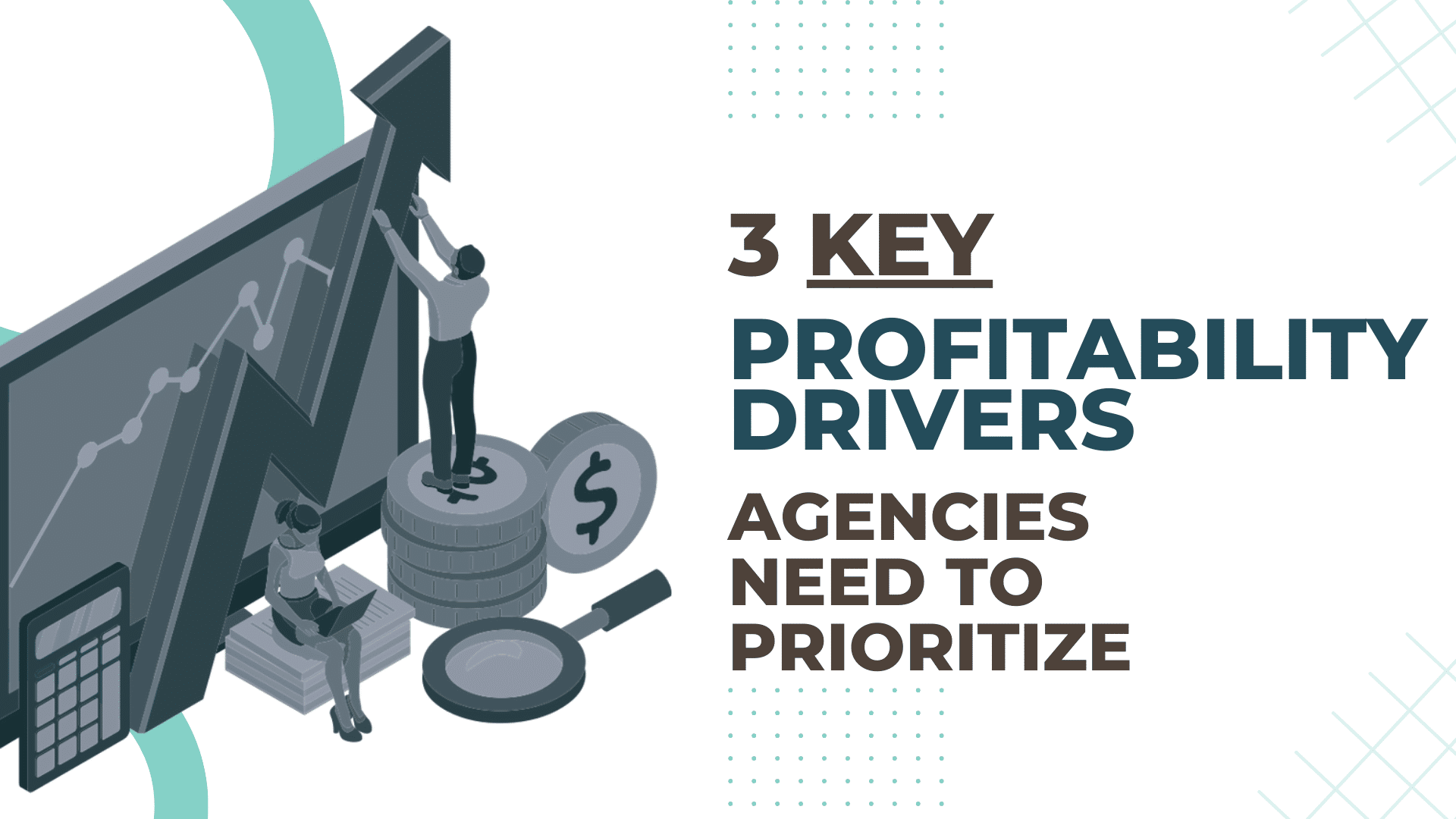



0 Comments